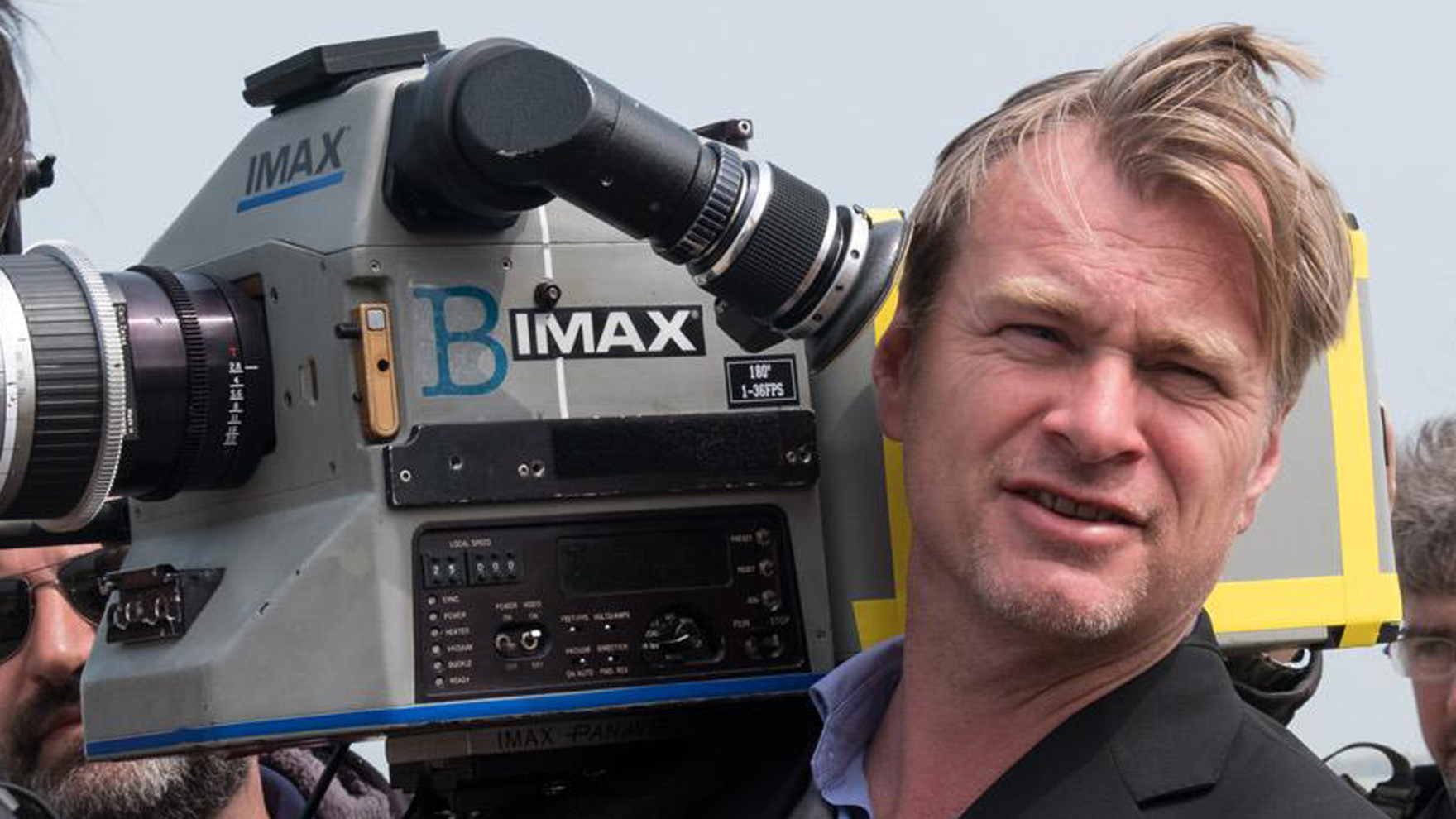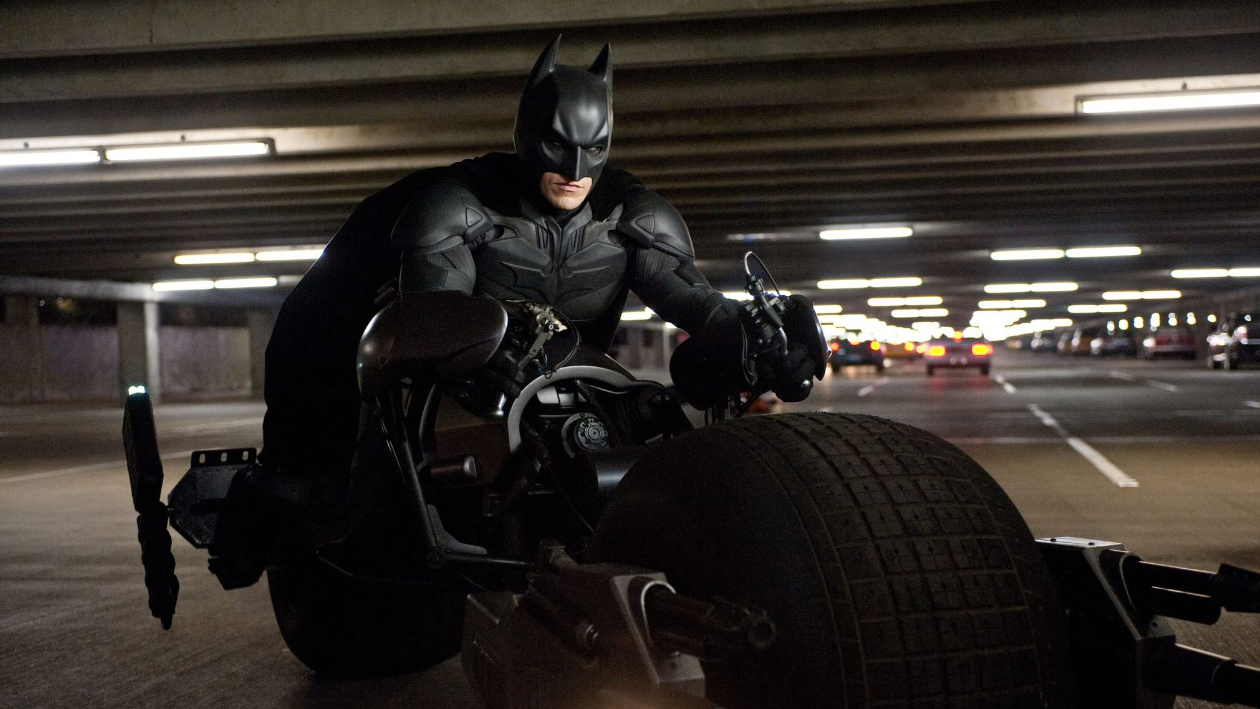Christopher Nolan's $1,500,000 debt to IMAX, and counting!
$1,500,000 in damaged IMAX cameras, and still counting – welcome to Christopher Nolan's playground

If you are crazy about film and cinematography, then you would (or should) have heard of Christopher Nolan, who brought us Hollywood blockbusters like The Dark Knight (2008), The Dark Knight Rises (2012), and Dunkirk (2017). All are outstanding productions in their own right, but did you know a lot of the scenes – and a whopping 75% of Dunkirk – were shot on 70mm film using Imax cameras?
Now, Imax and 70mm are naturally expensive, just look at the prices that some of the best 35mm film on the market reaches, and you can just imagine how much 70mm from Kodak costs. (Imax 70mm film is shot 1.43:1 with perforations at the top and bottom, not the sides as on traditional film cameras – each frame has about 9x the area of a 35mm image.)
Each Imax camera is said to cost around $500,000, which leads us to the incredible story of how Christopher Nolan destroyed three of these amazing cameras, totaling a whopping $1,500,000. That's without knowing how well the filming of the hotly anticipated Hollywood blockbuster, Oppenheimer, is going. It has been said to have produced 11 miles (17.7km) of Imax footage – weighing in at 600 pounds (272kg)! Let's hope for no more camera casualties.
So just how did these Imax cameras, totaling an eye-watering $1,500,000, get destroyed? Let's take a trip down memory lane...
The Dark Knight
The sequel to Batman Begins brought about significant changes to the movie landscape in several ways. Not only did The Dark Knight emerge as a strong contender for major awards, but it also stood out due to its unprecedented utilization of Imax technology. Typically, only certain segments of feature-length films are shot in Imax, as dialogue-heavy scenes can be disrupted by the loud noise generated by Imax cameras. However, in the case of The Dark Knight, an astonishing 28 minutes of screen time were captured using the cameras, an unprecedented achievement in 2008.
Yet, this revolutionary step in cinema was not without its drawbacks. It was revealed that Christopher Nolan unintentionally destroyed one of the only four existing Imax cameras at that time. Nolan orchestrated the toppling of a truck amidst the bustling city of Chicago. In a departure from his usual filming style, Nolan employed a multi-camera setup for this stunt, using the four existing Imax cameras. However, when the truck flipped over, it unfortunately (but a bit inevitably) landed directly on one of those cameras, resulting in the complete destruction of this valuable equipment.
The Dark Knight Rises

Nolan fully maximized the potential of the Imax camera in The Dark Knight Rises, capturing extensive footage for the 2012 film, including awe-inspiring sequences like the gripping plane heist that opens the movie. While the storyline revolves around Bane and Talia al Ghul fulfilling Ra's al Ghul's desire to burn Gotham to the ground, there was a wealth of city footage to showcase in exquisite, high-resolution detail.
The best camera deals, reviews, product advice, and unmissable photography news, direct to your inbox!
A significant portion of the ultimate showdown in The Dark Knight Rises, featuring the clash between the Gotham Police Department and Bane's army, was filmed using Imax technology. Unfortunately, during this intense sequence, Nolan experienced another setback when he accidentally destroyed his second Imax camera – you can see where this is going...
Among the various new vehicles introduced in the film, such as The Bat, it was the relatively grounded Batpod that collided with the Imax camera. While maneuvering the bike down a building's staircase, the stunt double for Anne Hathaway's character came too close to the Imax camera, leaving the operators with insufficient time to pull away.
Footage of the incident captures the immediate shattering of the camera. Fortunately, none of the camera crew or the stunt performer sustained injuries. However, the incident serves as a poignant reminder of the fragility of even a robust and weighty camera.
Dunkirk

Dunkirk marked a notable departure for Christopher Nolan, diverging from his customary repertoire. Instead of embarking on a sci-fi odyssey like Interstellar or a sci-fi action blockbuster like Inception, Nolan ventured into the realm of a war epic. There were still trademarks, such as an evocative theme composed by Hans Zimmer, and he remained committed to utilizing Imax footage extensively.
The action sequences in Dunkirk were captured using the Imax camera, and since the film relies less on dialogue, Nolan could incorporate Imax footage more liberally than usual. However, this decision came at a cost, as it resulted in the destruction of his third $500,000 camera. Third in five movies, if you're counting.
Nolan's employment of the Imax equipment in Dunkirk took an unconventional but somewhat foreseeable turn, given the inherent risks. In one scene, he attached an Imax camera to a plane intended to crash into the ocean's surface.
Instead after impact with the water, the plane swiftly sank (shock!), and despite the presence of protective crash housing around the camera, shielding it from seawater, the whole thing descended to the ocean floor. It remained submerged for 90 minutes until it was eventually recovered.
Nolan was able to salvage the footage recorded by the camera, redeeming a portion of the unexpected mishap, though one camera-per-shot is a lot, even in Hollywood budgets.
So, that's the tally set at $1,500,000 for damages to Imax cameras, you can imagine that there were a few nervous moments when Nolan wanted to use Imax cameras for Oppenheimer. Hopefully, all Imax future cameras won't succumb to the "Nolan effect" but – if they do – you can be sure we will let you know about it.
If you want to read more about Imax, it's just 40 years since the first Imax camera went to space, before you take up action filmmaking, consider slightly budget-friendlier alternatives in our best cameras for film students guide.

For nearly two decades Sebastian's work has been published internationally. Originally specializing in Equestrianism, his visuals have been used by the leading names in the equestrian industry such as The Fédération Equestre Internationale (FEI), The Jockey Club, Horse & Hound, and many more for various advertising campaigns, books, and pre/post-event highlights.
He is a Fellow of the Royal Society of Arts, holds a Foundation Degree in Equitation Science, and holds a Master of Arts in Publishing. He is a member of Nikon NPS and has been a Nikon user since his film days using a Nikon F5. He saw the digital transition with Nikon's D series cameras and is still, to this day, the youngest member to be elected into BEWA, the British Equestrian Writers' Association.
He is familiar with and shows great interest in 35mm, medium, and large-format photography, using products by Leica, Phase One, Hasselblad, Alpa, and Sinar. Sebastian has also used many cinema cameras from Sony, RED, ARRI, and everything in between. He now spends his spare time using his trusted Leica M-E or Leica M2, shooting Street/Documentary photography as he sees it, usually in Black and White.

